Fremtidens forskere inden for ingeniørvidenskab støbes hos os. Vores ph.d.-studerende har høje akademiske ambitioner og leverer resultater af høj kvalitet til både den private og den offentlige sektor. Vores hovedfokus er anvendt forskning, og vi har et stærkt samarbejde med branchen for byggeri og bygningsdesign, fordi vi forstår deres kerneudfordringer og bidrager til at udvikle løsningerne.
Her på siden kan du møde nogle af vores ph.d.-studerende og læse om deres projekter.
Et team af forskere fra Aarhus Universitet har for første gang nogensinde koblet 40 års produktivitetsdata i byggeriet med det faktisk udførte arbejde. Resultaterne viser, at produktiviteten i byggeriet har været faldende siden 70’erne, og giver samtidig svar på, hvorfor den falder, samt hvordan vi kan få langt mere effektivt byggeri i Nordamerika og Europa.
”Dem, der har størst indflydelse på effektiviteten, og dermed på hvor mange penge der tjenes, er byggeledelsen. Og måden, man øger effektiviteten, er ved at bruge metoder, værktøjer og viden, der allerede eksisterer," siger ph.d. Hasse Neve, der sammen med bl.a. professor Søren Wandahl står bag den nye forskning, der viser, hvordan man kan ændre produktivitetsudviklingen i byggeriet.
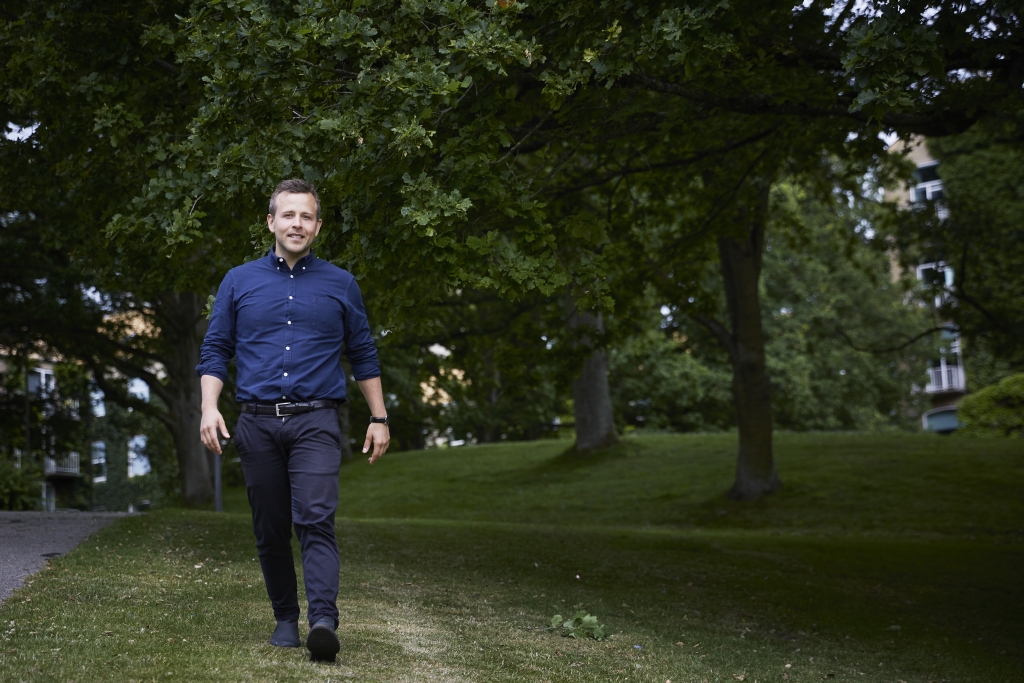
Mød flere af vores ph.d.-studerende ved Institut for Byggeri og Bygningsdesign og læs om deres projekter her:
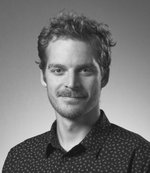
The PhD research aims to advance sustainability by enhancing modular timber construction via digitalization, automation, structural design, and circularity practices.
The project will investigate the challenges in structural engineering of modular timber structures, focusing on both panelized systems and volumetric modules. It will explore, how we can address these challenges, by developing novel digital concepts and innovative solutions. Key topics include digitalization and automation in construction; hierarchical approaches in analysis, design, documentation, and construction; and design for disassembly and reuse.
The PhD is associated with the ASCEND project (Advancing Sustainable Circularity for Eco-friendly Net-zero Developments), funded by EU Interreg ÖKS. The interdisciplinary collaboration, led by Lund University and Aarhus University, investigates reuse strategies for existing buildings, modular designs using renewable materials for new constructions, and techniques for deconstructing materials safely. By integrating these strategies, the aim is to achieve eco-friendly, net-zero developments that minimize waste and maximize resource efficiency.
Project title: Digital Concepts for Modular Timber Structures within the 9R circularity framework
PhD student name: László Mangliár
Main supervisor: Lars V. Andersen
Co-supervisor(s): Steffen Petersen
Project start: 01/01 2025
Research Section: Structural Dynamics and Geotechnic

This project aims at developing innovative solutions to realize sustainable construction practices through regenerative modular building. The focus is on hygrothermal performance, integration of HVAC, and minimization of the life-cycle environmental impact when developing new modular building enclosure concepts. The research is part of the ASCEND project (Advancing Sustainable Circularity for Eco-friendly Net-zero Developments), which is funded by EU Interreg ÖKS.
When developing sustainable solutions for the future construction industry, it is essential to take the effects of climate change into account. The changing climate significantly affects the built environment, especially in terms of the energy needed for heating and cooling. Therefore, a part of the research will focus on exploring how climate change is expected to affect the heating and cooling energy needs of Scandinavian buildings in the future given different scenarios for climate change. The results of this investigation will be a steppingstone for investigating how to adapt existing and new buildings to the current and future effects of climate change as well as how to mitigate climate change by reducing greenhouse gas emissions. The research focuses on new buildings as well as renovating, transforming, and retrofitting existing ones. Adaptability is a keyword in the development of the modular building solutions to ensure their applicability in various climate change scenarios.
Project title: Digital concepts for building enclosures within a 9R framework for regenerative modular building
PhD student name: Kristine Strøm
Main supervisor: Steffen Petersen
Co-supervisor(s): Lars Vabbersgaard Andersen
Project start: 01/02 2025
Research Section: Department of Civil and Architectural Engineering - Building Science

Anthropogenic CO2 emissions and massive volumes of industrial waste pose dual environmental challenges. In this project, we will investigate how to tackle both by developing a biotechnological process which will be able to convert alkaline waste streams into stable carbonate, using CO₂ as a resource. At the core is carbonic anhydrase, a highly efficient enzyme that accelerates the conversion of CO₂ into solid calcium carbonate.
A significant drawback is the instability of most natural carbonic anhydrases under the conditions typical for carbonation of waste materials. To overcome this limitation, we aim to identify and create robust carbonic anhydrase variants that are suited for the carbonation processes. We will employ AI-driven protein design and directed evolution for this purpose. These engineered carbonic anhydrases will then be used to mediate the carbonation of construction waste, resulting in the creation of carbon-negative materials.
The overarching goal is to implement biocatalytic CO₂ mineralization to create novel circular cements, thereby mitigating the carbon footprint of the construction sector and enabling effective reuse of alkaline solid wastes. Significantly, this work extends beyond CO₂ capture to explore the conversion of the resulting mineralized products into new sustainable cements. The objective of the BioCem initiative is the synergistic integration of carbon capture and circular economy principles, ultimately yielding scalable solutions for sustainable building materials.
Project title: Leveraging construction waste: biocement by carbonic anhydrase mediated CO2 mineralization (BioCem)
PhD student: Christian Daugaard Wolff
Main supervisor: Min Wu, Department of Civil and Architectural Engineering
Co-supervisor(s): Zheng Guo, Department of Biological and Chemical Engineering
Project start: 01-05-2025
Research Section: Structural Engineering (CAE) and Agro-Biotechnology Science Group (BCE)
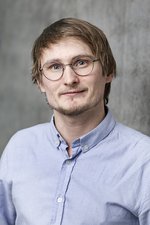
This project focuses on improving the design of floating wind turbines (FOWTs) by developing a new approach for anchoring and mooring systems. These turbines are key to harnessing renewable energy from deep-water locations that are currently not suitable for traditional offshore wind farms. The main goal of the project is to create a new computational framework that can model multiple floating turbines connected by mooring lines to shared suction anchors. This model will help optimize the design of the anchoring systems for different environmental conditions.
The project has three key objectives. First, it aims to develop a computational tool that combines detailed and simplified models to simulate the behaviour of suction anchors and mooring lines under various conditions. Second, it will integrate this tool into the design process of the industry partner, COWI, allowing them to carry out sensitivity studies and risk assessments to improve the design of the anchor systems. Third, the project will apply this framework to design foundation solutions for two North Sea sites, providing a reference for future offshore wind projects.
Ultimately, the project will help advance the geotechnical design of floating wind turbines, making them more reliable and cost-effective for deep-water installations.
Project title: Shared Suction Anchors Restraining Floating Wind Turbines via Mooring Lines in the North Sea: Prototypes and a Geotechnical Design Methodology
PhD student: Nikolaj Braüner Bjerge
Main supervisor: Lars Vabbersgaard Andersen
Co-supervisor(s): Andrea Franza, Felipe Prada, Søren Dam Nielsen and Peder Hyldal Sørensen
Project start: 1-11-2024
Research Section: Structural Dynamics and Geotechnical Engineering

The built environment plays a crucial role in the efforts to stay within planetary boundaries, both as a significant source of emissions and as a key area for sustainable transformation. In recent years, there has been a growing focus on moving toward a circular economy in construction: excess and used materials previously labeled as waste are becoming valuable resources, turning buildings into material banks.
The research framework of this project centers on the 9R concept for circular economy: Refuse, Rethink, Reduce, Reuse, Repair, Refurbish, Remanufacture, Repurpose, and Recycle. The project will commence with a mapping of existing processes for deconstruction of buildings. The work will involve research-based development of new flows and processes of how a building can be deconstructed and the materials quality assured, sorted, stored, and transported, to enable more stakeholders to find opportunities for reusing building materials. The research will also involve practical experimentation and feedback from the building industry, thereby contributing to the advancement of regenerative practices.
This research is part of the ASCEND project (Advancing Sustainable Circularity for Eco-friendly Net-zero Developments), funded by EU Interreg ÖKS. ASCEND is a collaborative effort between Aarhus University, Lund University, and industry partners across Scandinavia. By integrating multiple strategies, the aim is to achieve eco-friendly, net-zero developments within construction that minimize waste and maximize resource efficiency.
Project title: Concepts for safe and sustainable deconstruction within a 9R framework for regenerative building
PhD student name: Stephanie Therkelsen Salling
Main supervisor: Søren Wandahl
Co-supervisor(s): Cristina Toca Pérez
Project start: 01-11-2024
Research Section: Construction Management and Engineering / Aarhus Centre for Regenerative Building

Housing associations and operation and maintenance organisations have clear and optimised economic strategies for building maintenance. When it comes to including climate and environmental aspects in their strategies there is a lack of knowledge. Currently the maintenance methods and frequencies are based on guesswork. And is it even climatic and environmentally best to maintain the current buildings instead of renovating or demolishing them?
The purpose of this project is to provide and operationalize new knowledge about the environmental impacts of different strategies for maintenance, repair, and replacement of the building envelope in existing rental housing. The project aims to contribute with knowledge about the environmental impact during the lifecycle phases 'maintenance' (B2) and 'repair' (B3) of the building envelope. This new knowledge will be used to address the project's overarching research question:
"From an environmental lifecycle perspective, is it more beneficial to extend the lifespan by maintaining and/or repairing the components of the building envelope, rather than letting them reach their end of life and then replacing them?"
Project title: Climate-friendly maintenance of existing housing
PhD student: Markus Hahn-Hundsdahl
Project start: 01-06-2024
Main supervisor: Steffen Petersen
Co-supervisor(s): Helle Lohmann Rasmussen (Dansk Facilities Management)
Research Section: Center for Regenerative Construction

Stay cable bridge is a type of cable supported bridge with common main spans between 200m and 1000m, one famous example in Denmark is the Øresund bridge between Denmark and Sweden.
This type of bridge is composed of foundation, a bridge deck (where the cars drive), a pylon (or tower), and stay cables connecting the bridge deck to the pylon. The stay cables are between 7cm and 25cm in diameter and between 100m and 600m in length, the slender and long characteristics leads to an element prone to vibration, similar to a string in a music instrument.
The project aims at refining the knowledge on the amount of damping needed due to different external loads, for example wind loads in dry conditions, wind loads in wet conditions (rain and ice). Moreover, the vibrations of the cable can be either in the vertical direction (heave motion) and/or lateral direction (sway motion), therefore a better understanding of the vibration on these two directions and how they are coupled could lead to a more optimal design, where an external damper could be added to the structure taking into account the direction needed.
A more optimal design can lead to savings in material, lower self-weight of the structure (less load carrying needed), easier maintenance and safer structures. These all aim towards a more sustainable design.
Project title: Required Damping of Bridge Stay Cables
PhD student: Vitor Diniz Pinto
Project start: 01-04-2024
Main supervisor: Christos T. Georgakis
Co-supervisor(s): Allan Larsen (COWI A/S)
Research Section: Structural Dynamics and Geotechnical Engineering

The PhD project is an industrial PhD which is carried out in collaboration with Ove Arup & Partners. Arup is an independent firm of engineers, consultants, designers, planners, and technical specialists offering a broad range of services worldwide.
Cities’ drive to become carbon neutral requires the enhancement of transport infrastructure. Underground construction of new metro tunnels and circular shafts is currently over-engineered due to empiricisms in design methods leading to unnecessary environmental and economic costs. The project objectives are to establish a data-driven analysis method that integrates analytical excavation-structure-interaction modelling for varying structural typologies (buildings, pipelines, tunnels) with real-world local and remote measurement and to implement this analysis method in the workflow of Arup by using a probabilistic approach that can optimize the design in terms of costs and carbon footprint while quantifying the influence of uncertainties in risk of damage assessment.
Project title: Ensuring the integrity of urban assets during excavations in Copenhagen: data-driven methods.
PhD student: Adriana Hernandez
Project start: 01-04-2024
Main supervisor: Andrea Franza
Co-supervisor(s): Francesco Petrella (Industrial supervisor)
Research Section: Structural Dynamics and Geotechnical Engineering
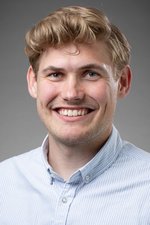
In the pursuit of renewable energy, hybrid testing potentially holds the key to extending the lifetime of offshore wind turbines, ensuring we maintain our momentum. As the offshore wind energy sector surpasses 30 years, wind turbine farms are reaching the end of their certification periods, with potential yet to be fully explored.
Current methods for predicting the remaining lifetime, involving the analysis of operational data and practical inspections, often fall short. Instead, hybrid testing a set of critical components, extracted from existing wind turbines, offers a more reliable prediction. Here, a physical component interacts with a numerical model, simulating the dynamic behavior of the remaining wind turbine. The key challenge of this method lies in the clash between physical and numerical realms, replicated by a testbench, as it is subject to instability.
This project aims to develop a robust framework for hybrid testing of wind turbine components and implement it in a real case study, specifically focusing on testing pitch bearings.
Project title: Digital Twins for Hybrid Testing of Wind Turbine Components
PhD student: Frederik Nordtorp Kristiansen
Project start: 01-08-2023
Main supervisor: Giuseppe Abbiati
Co-supervisor(s): Cláudio Ângelo Gonçalves Gomes
Research Section: Structural engineering

With a growing global interest in larger wind turbines, along with floating features for deep water applications, the industry faces costlier and more challenging maintenance tasks of wind turbines. A valuable tool to assess this challenge could be a Digital Twin which monitors the wind turbines in real time and estimates when maintenance is needed.
A Digital Twin combines a physical system, e.g., a wind turbine, and its computer simulation model(s) with data exchange in between. The physical system is equipped with sensors, which, combined with the simulation models, enable the estimation of unobserved or unmeasured quantities. Such estimated quantities could be the fatigue in the steel and/or the changing soil stiffness at the foundation due to the fluctuating load pattern a wind turbine is subject to.
The project aims to develop an algorithmic framework that is suitable for crafting digital twins of offshore wind turbines (WTs).
Project title: Algorithms for digital twins of offshore wind parks
PhD student: Anders Malund Dammark Jensen
Project start: 01-11-2023
Main supervisor: Giuseppe Abbiati

In countries with cold winters, such as Denmark, there is increasing evidence of summer overheating in residential building stocks. Climate change, winter heat retention as the main focus of the thermal design, and high insulation levels due to renovation are the main causes. Hence, buildings are becoming increasingly uncomfortable for their occupants during hot summers, leading to a rise in hospital admissions due to heat related respiratory diseases and higher mortality rates. The Danish Ministry of Environment, therefore, predicts an increase in air conditioning installation. Aiming to waive this energy-intensive measure, which contradicts the current EU target to reduce the energy consumption of the building stock, passive strategies, such as natural ventilation, could alleviate this problem. From this background, this research project aims to explore and provide a practical solution that uses passive strategies to improve summer thermal comfort in renovated Danish residential buildings. In this way, the solution counteracts the predicted increase in cooling energy due to installing air conditioning and further provides resilience against climate change. The PhD project has the following objectives:
This research was funded by Independent Research Fund Denmark, grant number “0217-00018B”.
Project title: Exploring and developing architecture design approaches for natural wind ventilation of rousing stocks in Denmark
PhD student: Laura Annabelle Bugenings
Project start: July 2021
Main supervisor: Aliakbar Kamari
Co-supervisor: Li Rong
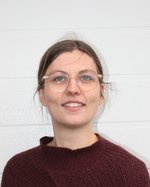
The issue of sustainability is becoming more and more the central key to a better future. This focus has also taken hold in the Danish construction industry through, among other things, the sustainability certification of buildings, and the Danish building regulations’ requirement for life cycle assessments for newly constructed buildings. A commonly used depiction of sustainability divides the concept into environmental, economic, and social sustainability. Both environmental and economic sustainability are reasonably well-defined, with clear targets and assessment methods. Social sustainability, on the other hand, is usually more vaguely defined, focusing on concepts such as well-being, health, safety, and equality at both the level of society and individual. To fully address the task ahead, building designers to address sustainability, they need to be introduced and equipped with adequate methods and decision-support tools to facilitate the integration, assessment, and evaluation of social values while also being informed of the environmental and economic consequences of the choice. In the light of this, the main objectives of this PhD project are:
This project has received funding from the European Union’s Horizon 2020 research project, PROBONO, under grant agreement no. 101037075.
Project title: Social and socio-environmental sustainability value assessment and creation in the design of building renovation projects
PhD student: Anna Elisabeth Kristoffersen
Project start: February 2023
Main supervisor: Aliakbar Kamari
Co-supervisor: Carl Peter Leslie Schultz

Cable icing is a critical issue for bridges based on cable systems for two main reasons: (1) the aerodynamic behavior can be altered inducing large vibrations, and (2) the ice can detach from cable surfaces due to mechanical or thermodynamic reasons creating large risk for the traffic flowing on the deck. Nowadays, several solutions were proposed for protecting cable systems in bridges from the icing hazard, but they are still far from being mature systems providing full protection.
One of the critical issues of these systems is the reliable detection and quantification of the ice accretion on the cable system. Accurate detection and measurement of the ice became critical to manufacturers and operators of cable systems, in order to minimize, predict or quantify these issues. Ice detection systems exist, but none of them is reliable enough to perform under such extreme conditions. An ice detection system can provide early warning ice alarms, ice accumulation rate information, and accurate visual information of ice profiles to the operator.
Computer vision techniques offer promising non-contact solutions to civil infrastructure condition assessment. This research project aims at exploring the opportunities of computer-vision techniques for the detection, qualification, and quantification of ice and snow accretion and falling on bridge cable systems. It is envisioned that these methods can reliably identify the ice accretion and thus provide an early warning indication to bridge operators. Subsequently, the key challenges that persist toward the goal of automated vision-based ice control on bridge cables and industrial applications should also be explored in this research project.
Project title: Computer-vision techniques for detection, qualification, and quantification of ice and snow accretion and falling on bridge cable systems
PhD student: Dexu Cai
Project start:March 2023
Main supervisor: Christos T. Georgakis
Co-supervisor: Cristoforo Demartino

The AECO sector is facing an ever-growing demand for critical innovations in terms of digital transformation and technologies such as ICT, Industry 4.0, artificial intelligence (AI), big data, blockchain technologies, building information modeling (BIM), etc. The digital construction industry can provide an evidence-based understanding of the built environment. If properly implemented, benefits can be realized by creating, managing, and maintaining information throughout a building's lifecycle, from concept design to the eventual disposal of the building. It enables all stakeholders involved in a building project to take advantage of access to real-time federated data sources linked to the physical built environment, commonly referred to as the Internet of Things (IoT) or a Digital Twin (DT).
Digital Twin allows the digital transformation of physical buildings by integrating their digital models and analytical simulation engines with their real-world data, maximizing the value of data, and creating beneficial synergies across their entire life cycles. The soul of a Digital Twin lies in its data. To create a digital replica that mimics the behavior of a building, heterogeneous data must be extracted from multiple sources on the building in question. Existing limitations create a lack of complete and reliable information on buildings, which leads to data modification and limits the scope of benefits that can be achieved through subsequent modeling. For those buildings for which a building information model is available, reliable data can be extracted and integrated with data from multiple sources to create a Digital Twin for a specific purpose (e.g., Improved building design, enhanced energy efficiency, predictive maintenance, etc.) of the building under consideration. In this framework, this PhD project aims to achieve the following objectives:
This project has received funding from the Higher Education Commission of Pakistan
Project title: Information Modelling for Leveraging Digital Twins at a Building Level
PhD student: Muhammad Farhan Jahangir
Project start: February 2023
Main supervisor: Aliakbar Kamari
Co-supervisor: Carl Peter Leslie Schultz

With the aim of implementing the concept of sustainability, numerous measures are emerging today that address the increasing challenges of our society, which include climate change and resource scarcity. The building construction sector is one of the largest contributors to the emission of greenhouse gasses, and one of the largest producers of waste. Building with timber, which is a renewable resource, can reduce the environmental impact of buildings. In addition to that, it is important to extend the service life of construction materials, including that of timber, as much as possible. This objective can be achieved by reusing, upcycling and recycling construction elements, and by developing modular, reconfigurable and reusable construction elements and systems.
Therefore, this research sets out to investigate construction solutions that allow timber building systems to be more reusable, and that allow for a wide range of design configurations. At the same time, for timber-based structural systems, factors such as the mechanical properties of engineered timber products and the corresponding prefabrication or digital fabrication methods are essential.
Moreover, this doctoral research aims to investigate new modular wooden components based on reclaimed and discarded material. It will investigate digital fabrication and construction processes, including digitally fabricated joints of these components. Finally, it will propose a construction system and explore and validate its design space by means of a combinatorial design, and by proposing construction components that combine virgin and reclaimed material in an optimal way, depending on the structural needs.
Project title: Rethinking Modular Timber Structures via Digital Fabrication, Combinatorial Design, and Optimal Material Use
PhD student: Jiayi Li
Contact: kayeeli@cae.au.dk
Project start: October 2022
Main supervisor: Lars Vabbersgaard Andersen
Co-supervisor: Markus Matthias Hudert

Wind, solar, wave, and tidal energy play a central role in achieving the decarbonization of our energy system. As a consequence, a large portion of future power grids will be installed offshore in the form of floating structures interconnected by a shared mooring system in a scalable and cost-optimal way.
Optimizing such systems requires accurate prediction of hydrodynamic loading exerted on floating structures. Despite the tremendous development of computational modeling tools, hydrodynamic loading models still require extensive experimental validation to provide accurate predictions. Such experiments are time-consuming and, therefore, limited in duration and number.
This project aims at developing and implementing machine learning algorithms for the design of optimal hydrodynamic experiments. The goal of the algorithms is to provide information about a floating model such that the cost of calibration of hydrodynamic loading models is minimized, and uncertainty on responses of interest can be quantified.
Project title: Cyber-physical empirical methods for lattices of marine structures
PhD student: David Stamenov
Contact: stamenovd@cae.au.dk
Project start: March 2022
Main supervisor: Lars Vabbersgaard Andersen
Co-supervisor: Giuseppe Abbiati and Thomas Sauder
An improper thermal environment may result in a negative spiral of development for animals, especially domestic animals raised in a relatively closed environment. Some regions of high latitude, i.e. Northeast China, are main areas for dairy production. However, the climate there in winter is especially cold and the average temperature can be as low as minus 20 degrees. Additionally, high-humidity air and high concentration of harmful gases, i.e. Carbon dioxide, methane, ammonia, and nitrous oxide, appeared in dairy cattle barns contribute to a passive impact on the production and reproduction of cows. Hence, it is always a challenge to achieve a balance between the construction economy and good indoor climate towards dairy cattle barns in these regions.
The aims of the project are: 1) to introduce an innovative ventilation design for optimizing the thermal and airflow conditions in these different types of cattle barns; 2) to set up a dynamic predictive model to provide a precision environment control strategy at individual animal or defined zone level; 3) to improve animal welfare and to reduce environmental impact in cold region; 4) to generate a design standard for ventilation and construction of cattle barn with considerations of energy saving and animal welfare.
Project title: Innovative ventilation design with better thermal environment and air quality for dairy cattle barn in cold climate
PhD student: Zhe Cao
Contact: zhe.cao@cae.au.dk
Project start: December 2019
Main supervisor: Guoqiang Zhang
Co-supervisor: Rong Li